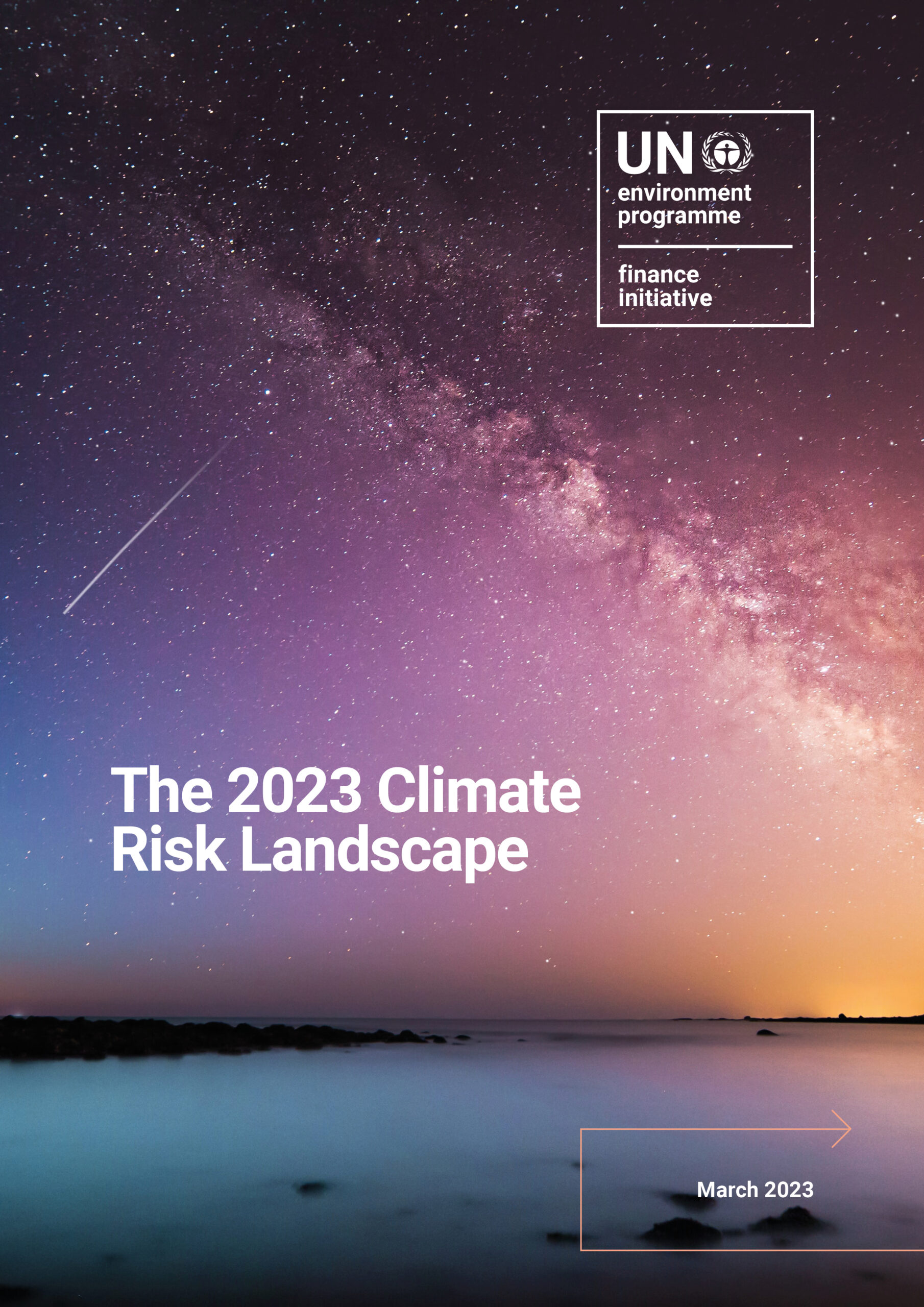
07 March 2023Climate Change, Publications, Risk, TCFD
POPULAR CONTENT

07 March 2023Climate Change, Publications, Risk, TCFD

17 May 2022Events, Roundtables

19 December 2023Banking, Climate Change, Insurance, Investment, Nature, News, Policy, Pollution & Circular Economy, SDGs and Impact, Social

The unprecedented global transition to a resilient net-zero economy requires insurance companies to adapt their business models and strategies to…

The Net-Zero Export Credit Agencies Alliance (NZECA) Target Setting Protocol provides guidance to export credit agencies (ECAs) and export-import (ExIm)…

The Net-Zero Asset Owner Alliance’s Progress Report presents transparently and credibly members’ efforts to achieve net-zero greenhouse gas (GHG) emissions…

UNEP FI's new Principles for Responsible Banking (PRB) guidance, Sector Action Guidance for Nature: Getting Started in the Agricultural, Forestry and Mining Sectors, aims to translate the recommendations from the PRB Nature Target Setting Guidance into practical, sector-specific actions. Developed in partnership with The Biodiversity Consultancy (TBC), this new PRB Sector Guidance makes explicit the specific priority actions banks can support clients to take in high impact sectors such as mining, agriculture and forestry, and is aimed to empower banks in their risk mitigation efforts across six key commodities, namely bauxite, copper, cattle, wood, soy and palm oil.

This report offers guidance to help boards of financial institutions navigate complexities by providing a clear approach for identifying, managing, and reporting on nature-related risks and opportunities, enabling integration into governance and strategic decision-making. Recent research shows that 85% of the world’s largest companies depend on nature, yet only 2% have boards with relevant expertise. Protecting nature can safeguard businesses and open new opportunities, and this report includes a blueprint outlining key actions to integrate nature-related considerations into executive leadership.

This playbook gives investors a simplified step-by-step approach to integrating the identification, assessment and management of physical climate risks in the investment process. It focuses on how to assess physical climate risks and identify adaptation and resilience (A&R) opportunities in the context of corporate finance. The playbook is product agnostic, and can be applied to the provision of capital across both equity and debt instruments.

The Kunming-Montreal Global Biodiversity Framework (GBF) provided clear marching orders to align financial flows with the aim of halting and reversing nature loss. Since it was adopted at CBD COP15, various actors within the financial system—governments, central banks, private and public institutions—have further incorporated nature and biodiversity into financial decision-making, including nature-related risk assessment and sustainable investment strategies. This briefing note provides a summary of how the financial system has responded to the GBF over the past two years, following the High-level roadmap: Aligning financial flows with the Kunming-Montreal Global Biodiversity Framework.

Navigating the dynamic intersection where science, regulation, standards and sustainable innovation meet, responsible banks play a critical role as both…

‘Target Setting for Capital Markets Activities’ addresses challenges banks face in setting net-zero targets for capital market activities. In summarising the findings of 22 member banks, this supporting note explores four key areas: facilitated emissions, activity scope, target design options, and implementation considerations.

‘Climate Target Setting for Power Generation Sector Financing’ is the fifth in a series of publications developed by members of the Net-Zero Banking Alliance (NZBA) with the goal of assisting banks by outlining the choices they face when setting climate-related targets for financing in various carbon-intensive sectors of the real economy.